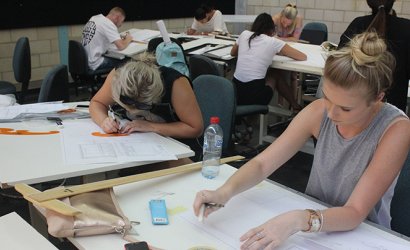
Why choose this course?
Turn your creative flair into a career in interior design. This two year course will give you an understanding of the nature of environmental space and spatial ambience with the ability to manipulate the relationship of spaces, objects and products within the surrounding space.
You will gain the skills to approach a variety of design problems with creativity and be sensitive to the requirements of a design brief. During your studies you will develop and respond to client briefs, specify furniture, finishes and equipment, colours, lighting, hard and soft materials and fixtures. You will also gain the skills to provide hand drawings, use auto computer-aided design (CAD) applications and illustrate design proposals.
You will work on simulated live projects with many different briefs from a wide range of industry disciplines. There are also opportunities to participate in industry visits and enter competitions that also engages with industry.
Once you complete this diploma you have the opportunity to study for a further year in the MSF60122 Advanced Diploma of Interior Design.
Career opportunities
- Design Project Administrator
- Interior Designer
-
An IELTS score (academic) of 6.0 with no band score less than 5.0 or equivalent.
-
Equivalent to Australian Year 12.
-
OR Completion of CUA30720 Certificate III in Design Fundamentals is required for entry into this course.
Please refer to the Non-Tuition Fees section of your Letter of Offer for any additional requirements where a cost may be incurred.
There may be further semester intakes available for enrolment. You can view any further intakes when you submit your online application(opens in a new tab).
For information about pathways from TAFE to university, view our Pathways to university page.
How to apply
Apply to study at TAFE in six steps:
- find a course;
- check entry requirements;
- submit an application;
- accept your offer and pay;
- apply for your student visa; and
- receive your visa and come to Australia for your studies.
Build your own course guide
Select the study areas, courses and topics you like. Get your custom guide by email!
Download study area guide(opens in a new tab)
Contact us(opens in a new tab)
TAFE International Western Australia (TIWA) is the Registered Training Organisation (RTO) and Commonwealth Register of Institutions and Courses for Overseas Students (CRICOS) provider, for the delivery of training to international students, enrolled in a TAFE course in Western Australia. This nationally recognised course is delivered by a Western Australian TAFE college on TIWA's behalf. TIWA retains responsibility for the quality of the training and assessment delivered by the TAFE colleges and for the issue of certification documentation to students.

